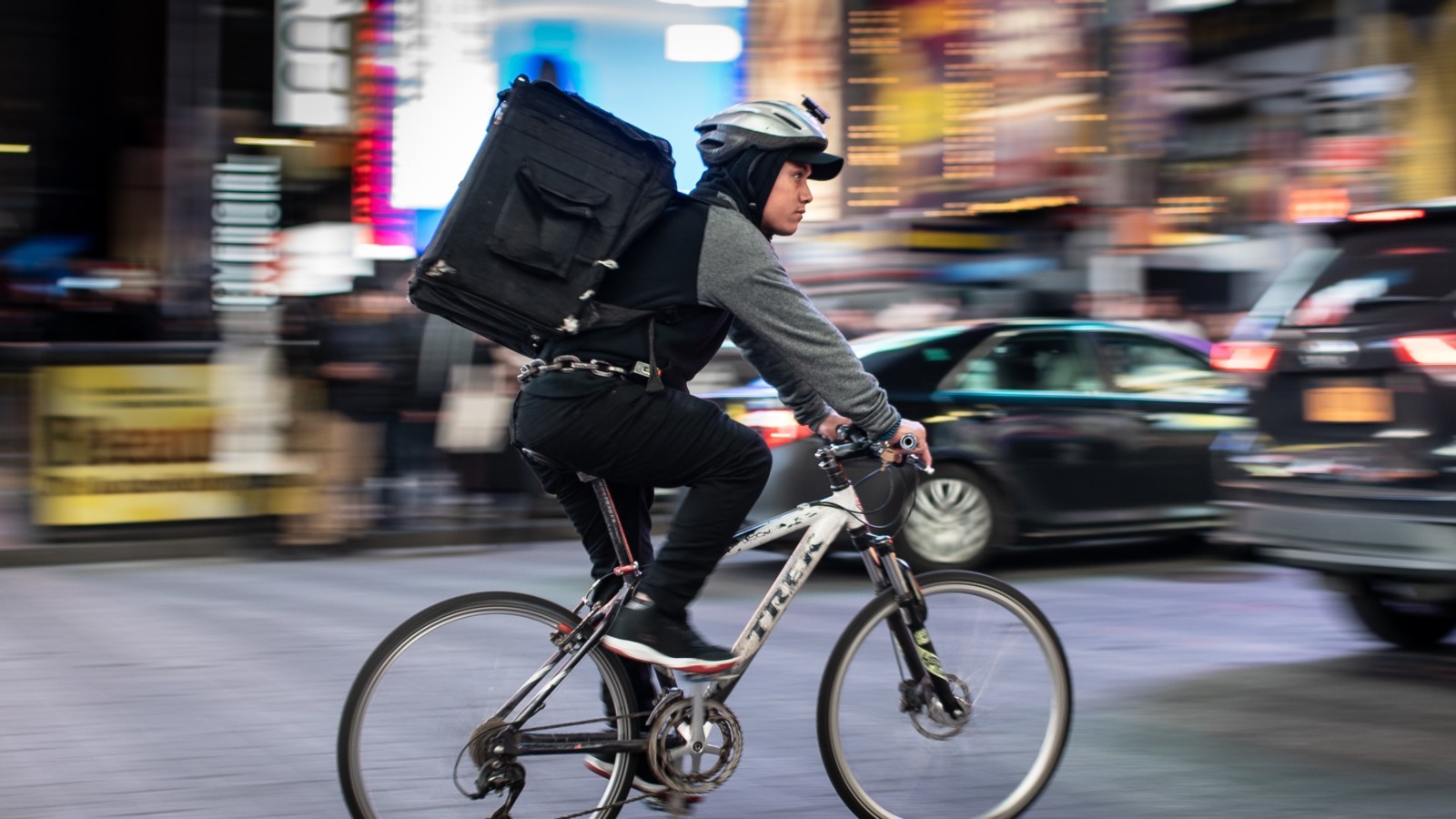Food for thought: ‘Hunger-Scrolling” is easy, enjoyable, and even entertaining to do. But amid this pandemic, it’s contributing to a slew of health issues. Here are some tips on healthier hunger-scrolling.
Indoor dining is slowly but surely coming back to New York!
With 50% capacity on the horizon, and a ramp of vaccines and vaccination sites also on the menu, we might be ready to ditch the takeout for a night on the town, only to find that while we were staying in, our waistlines were breaking out.
Simply put, ordering out has emerged — and remains — a compelling, entertaining, but also a potentially harmful option for New Yorkers amidst the COVID-19 pandemic.
I call it “hunger-scrolling,” and it’s further fueling the obesity epidemic.
Bad Weather? Bored? No problem. A lovely cheese pizza (just for you) can be at the doorstep in minutes flat. This might look harmless in the movies, but in real life, it adds up and takes a toll on our health.
But is this rising takeout and social trend the best option? Only if you choose wisely.
With various delivery platform options and menus that look more and more like the center of Times Square, ordering out can be both an engaging and delicious experience, but understanding exactly what you’re putting into your body is of paramount importance.
Limiting excess sugar and unhealthy fats might sound difficult, but if you pay attention it can be done. Something as simple as including more plant-focused foods can help improve the quality and nutritional density of the foods you consume. Remember, we are aiming for high vitamin, mineral, and fiber content to help us feel full and get nourishment from our meals.
That being said, it’s not like Americans were eating all that well before the pandemic. A 2018 study by the Journal of the American Medical Association showed that poor diets were the leading cause of poor health in the U.S., and the COVID-19 crisis has only heightened those concerns.
Sixty-six percent of American adults were ordering out as of November 2020, according to the National Restaurant Association, up from 58 percent nine months earlier. And not coincidentally, 27.5 percent of the respondents to a study in the journal Obesity reported that they had gained weight during the pandemic.
This puts a sobering new spin on the “COVID 19,” the number of pounds some have jokingly said we are apt to gain during the pandemic. In reality, even if temporary, we should be avoiding this weight gain, given all the negative outcomes that can result from excess weight, from cardiovascular disease to diabetes to impaired brain function.
At the same time, it’s easy to understand why takeout is such a compelling option. Not only is there a certain amount of transmission risk associated with going to a restaurant, it’s tougher than ever to get a table.
Some 1,000 New York City restaurants have permanently closed as a result of the financial downturn resulting from the pandemic, and there are dire predictions that that number could reach 12,000 before the outbreak is over; that’s over half of the 23,650 restaurants that were operating in the city as of 2019.
There’s also science behind the dilemma of eating healthier. Some studies suggest that when humans are under stress for an extended period of time — as would be the case during a healthcare/financial crisis like the one we face at present — the brain releases cortisol (i.e., the “fight-or-flight” hormone), which stimulates the appetite, especially for junk food.
Other studies suggest that such foods lead to the release of dopamine (i.e., the “feel-good” hormone), which disrupts the balance between ghrelin and leptin, hormones that stimulate and suppress appetite, respectively. In other words, fatty and sugary foods grow to be associated with pleasure, rather than hunger management, and overeating ensues.
That is why experts advise, and I tell my patients: monitor portion size and pay attention to how different entrees are prepared. You are far better off eating something baked, grilled, steamed or broiled, as opposed to fried and breaded.
Other smart moves are to make sure you’re properly hydrated and getting enough exercise. And a lesser-known piece of advice: Avoid screen time during mealtime, as such distractions might cause you to miss cues that you’re no longer hungry.
The bottom line is that takeout is easy, but it comes with a considerable cost — and not just the money. So, the next time you “hunger-scroll” on one of those apps, try and be smart in choosing what’s “on the way.”


